How to grow amaryllis bulbs
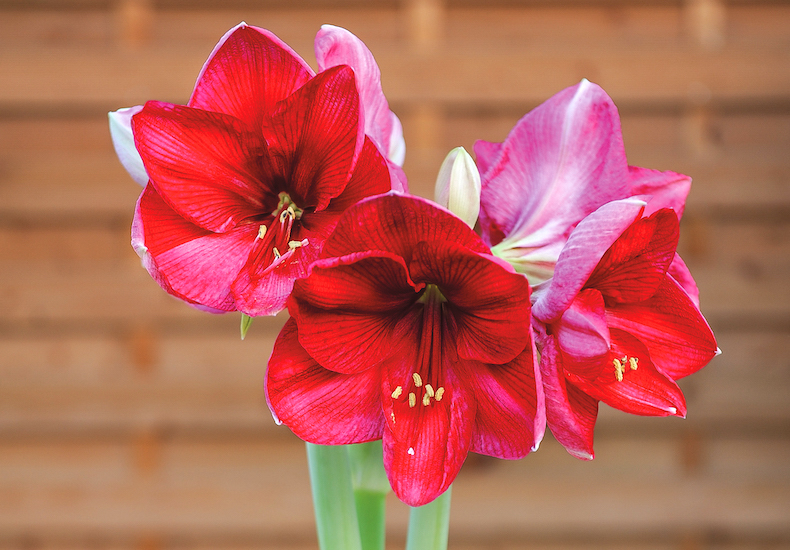
Amaryllis adds striking winter colour to your home
Image: Amaryllis In Globe - Gift from Thompson & Morgan
If you’re looking for a winter-blooming houseplant to add a bright splash of tropical colour to your home, amaryllis is an excellent choice. Renowned for their tall stems and big, bold flowers, some think of amaryllis as festive flowers, but you can enjoy them any time from Christmas through to the spring. Here’s how to grow them.
Am I growing Amaryllis or Hippeastrum?
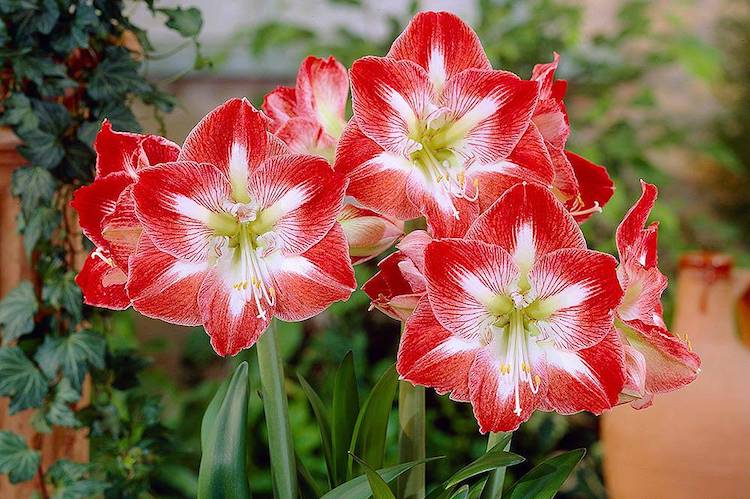
Amaryllis 'Minerva' has bright red blooms and a contrasting central star
Copyright: Visions BV, Netherlands
There’s only one true amaryllis, and that’s a native of South Africa called amaryllis belladonna or the belladonna lily. The plant we commonly call amaryllis actually comes from the genus Hippeastrum – the same family of plants as daffodils and snowdrops – and is a native of South America.
How to grow amaryllis bulbs indoors
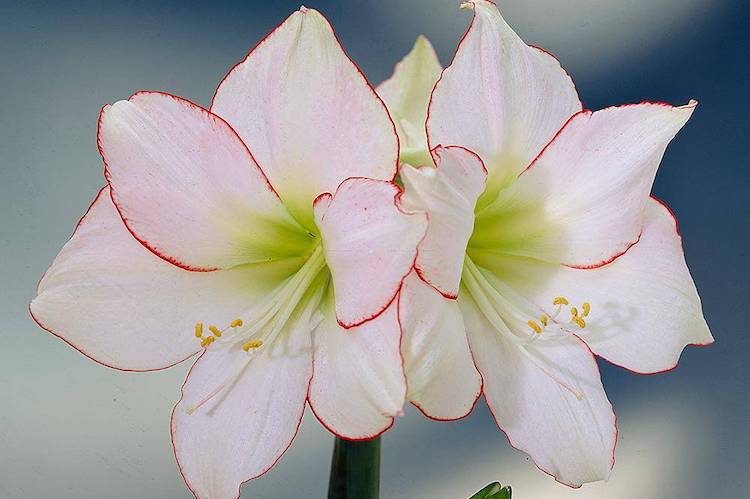
Amaryllis 'Picotee' bulbs 10-12 weeks before you want them to flower
Copyright: Visions BV, Netherlands
Plant your amaryllis bulbs between six and eight weeks before you’d like them to bloom. Using a pot only a little bigger than the bulb, cover two thirds of the bulb with general purpose compost, leaving the upper third uncovered. Water your amaryllis from the top, keeping the spoil continually moist but not so wet that water collects in the saucer.
As a tender plant, amaryllis need need to be kept at a steady 20 – 25°C to trigger them to begin to grow. At this stage it doesn’t matter if they’re kept in the dark – your airing cupboard is ideal.
Once the bulbs have sprouted, move them to a warm, bright spot to continue growing, remembering to turn them regularly to stop the stems bending towards the window or other light source.
Feed your burgeoning amaryllis with standard tomato fertiliser every 10 days as it grows, and remember to keep that soil moist. Once your amaryllis begins to flower, you can make the blooms last longer by moving the plant to a cooler spot.
How to grow amaryllis outdoors
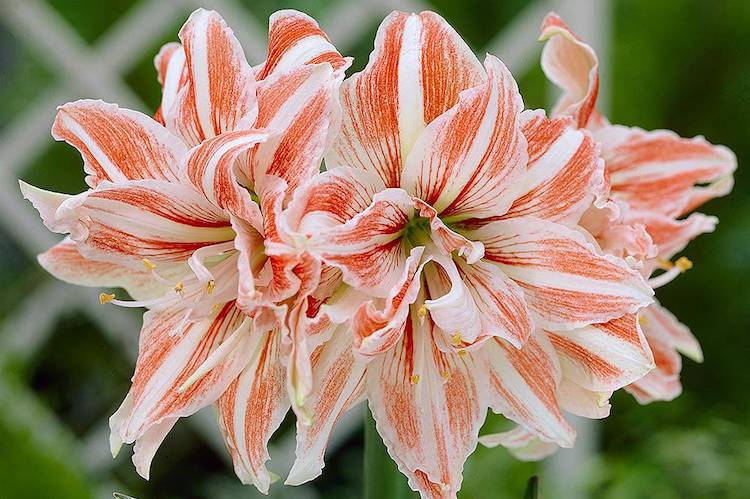
Amaryllis 'Dancing Queen' has showy double trumpet blooms
Copyright: Visions BV, Netherlands
As soon as the flowers have faded, it’s best to cut the whole stem off as close to the base as possible. The plant may now grow, and bloom for a second time and when blooming is complete, will produce foliage. Feeding is particularly important at this stage in order to nourish the bulb ready for next year’s flowering.
As long as there’s no risk of further frost, you can put your amaryllis outside for the spring and summer months. Place it in a sheltered spot where the sunlight isn’t too strong and water more sparsely without letting the soil dry out completely. Once the leaves start to die down, reduce watering until the compost is only just moist, allowing the amaryllis bulbs to become dormant or semi-dormant.
When autumn comes, move your amaryllis back inside, and begin the cycle again.
How can I encourage amaryllis to flower again?
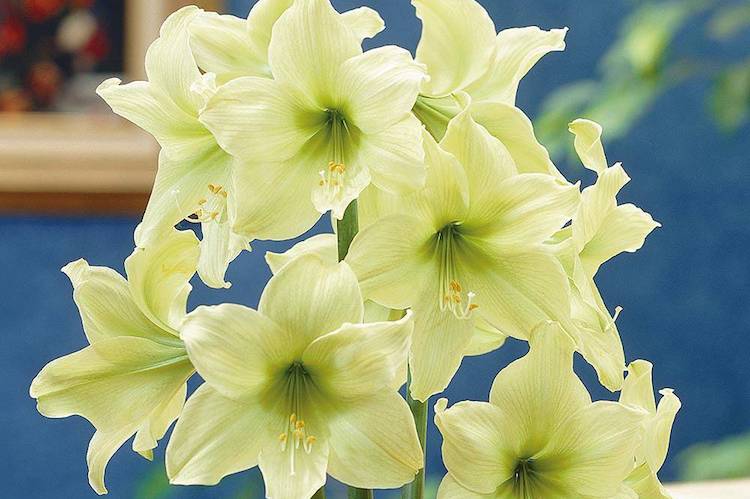
Impressively large, creamy yellow blooms make Amaryllis 'Lemon Star' so eye-catching
Copyright: Visions BV, Netherlands
Move your plant to a cool, bright position in late September, ideally around 13°C, for eight to ten weeks. Any old foliage can be cut back to the neck of the bulb. After this time, move amaryllis bulbs to a warm position and resume watering as per the growing instructions above. Once amaryllis plants are actively growing again, they can be fed with a balanced fertiliser every few weeks to encourage flower production.
Repot amaryllis plants rarely
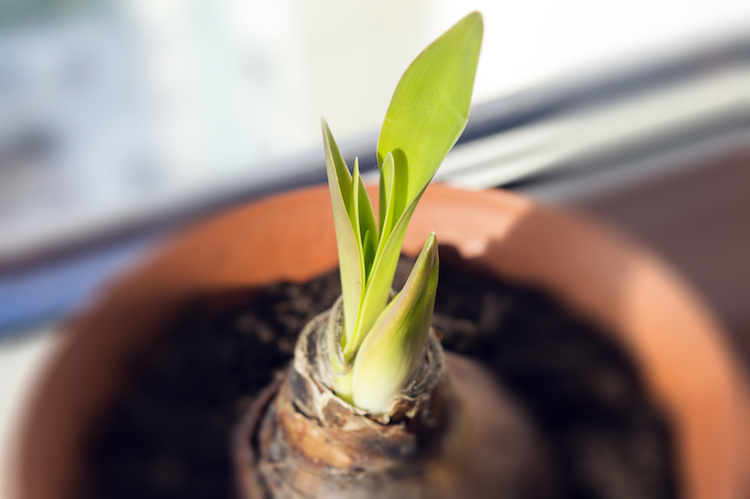
Don't choose a pot that’s too large
Image: Shutterstock
Amaryllis don’t like their roots being disturbed, so re-pot sparingly - every three years or so is about right for a continued good display. They grow best in small pots so don't be tempted to choose one that’s too large. After flowering, from January until March, take the bulbs out of the compost and gently remove as much as possible from around the roots. Refill the pot with fresh compost and re-plant the bulb with a third showing above the surface.
What’s your favourite amaryllis? Do let us know by popping over to our Facebook page and leaving us a message. Find more indoor and outdoor spring flowering bulbs to grow, along with specific growers' guides and planting tips, at our hub page.
Quick guide:
When do you plant amaryllis bulbs?
Plant amaryllis bulbs six to eight weeks before you’d like them to bloom. Keep them at a steady 20 – 25°C to trigger them to begin growing - your airing cupboard is ideal. Once the bulbs have sprouted, move them to a warm, bright spot to continue growing.
Can amaryllis grow outside?
As long as there’s no risk of further frost, you can put your amaryllis outside for the spring and summer months. Place it in a sheltered spot where the sunlight isn’t too strong and water more sparsely without letting the soil dry out completely.
How do I get my amaryllis to flower again?
To get your amaryllis to flower again, cut back old foliage in late September and move to a cool, bright position, ideally around 13°C, for eight to ten weeks. After this time, move amaryllis bulbs to a warm position and resume watering. Once actively growing again, feed with a balanced fertiliser to encourage flower production.
Sign Up For Exclusive Special Offers




© 2024 Thompson & Morgan. All rights reserved. A division of Branded Garden Products Limited.
Sign up for exclusive offers!



